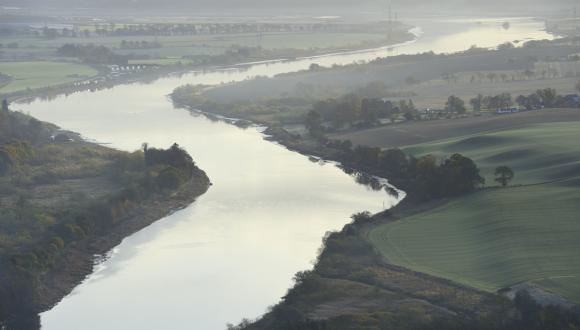Lamprey
Lamprey are both ancient and spectacular – particularly in how they use suckers and rasping teeth to feed on other fish.
Lamprey belong to an ancient order of vertebrates, the Agnatha or ‘jawless fish’.
Lamprey skeletons are formed of strong, flexible cartilage rather than bone. A round, sucker-like disc surrounds the mouth which, in adults, carries rasping teeth. Most, but not all, lamprey species are parasitic on other fish.
Lamprey are found in temperate waters in both the northern and southern hemispheres.
Three lamprey species occur in the UK:
- brook lamprey (Lampetra planeri)
- river lamprey (Lamprey fluviatilis)
- sea lamprey (Petromyzon marinus)
Brook lamprey
Brook lamprey are an entirely freshwater species and the smallest of the British lamprey, reaching 15 to 19cm in length. Unlike other British lamprey species, they don’t feed as adults.
Despite being wholly freshwater-resident, brook lamprey do undergo limited spawning migrations – though some such movements may be passive. For example, larvae may drift downstream to sandy/silt nursery areas.
Active upstream migrations of pre-adults and adults occur through the winter. On reaching suitable gravel areas, these fish hide until spawning takes place from April to June. All of these adults will die after spawning.
River lamprey
River lamprey are larger than brook lamprey, reaching 30 to 50cm in length.
They migrate from their coastal feeding grounds into freshwater, to get ready to spawn, during the autumn and spring. Autumn migrants are sexually undeveloped, while spring migrants enter from the sea in spawning condition.
River lamprey migrate upstream at night and the adults rest in cover during the day. Spawning takes place from April to May on pebble/gravel substrates.
Purely freshwater-resident populations of river lamprey are rare in Europe, but one exists in Scotland. The dwarf river lamprey is found in Loch Lomond and is so called as it reaches only 25cm in length.
Sea lamprey
The sea lamprey is the largest of the three British lamprey species, reaching approximately 1m in length.
After spending 18 to 24 months feeding at sea, adult sea lamprey migrate up rivers in the spring and early summer. They spawn from May to July in areas of pebble and cobble substrate.
Spawning
On reaching their spawning ground, lamprey construct a ‘nest’ in which to lay their eggs.
Brook and river lamprey spawn in a ‘ball’, which may comprise up to 50 individuals. Sea lamprey spawn in much smaller numbers.
Once hatched, the lamprey larvae – known as ammocoetes – drift downstream with the current. They settle in nursery habitats – areas with fine, soft substrate in well-oxygenated, slow-flowing water. Ammocoetes feed on diatoms and other algae, and bacteria.
Ammocoetes may stay in soft substrate for up to five years (up to eight years for sea lamprey) before they transform into pre-adults. River and sea lamprey will then begin their migration to the sea from late autumn onwards.
Threats to lamprey
Good water and substrate quality (particularly in spawning areas) is important for all lamprey species, and all species are threatened throughout their range by habitat degradation.
Physical barriers can pose particular risks to river and sea lamprey that migrate up rivers to spawn. Other freshwater-resident forms can be negatively affected by new, in-stream structures.
Brook lamprey have no commercial value, but river lamprey and sea lamprey are exploited commercially for food in some parts of Europe.
River lamprey fisheries once existed across Britain. Today, only one such fishery exists to supply the angling bait market.
Protection of lamprey
Find out about the river lamprey as a protected species of fish.
Learn about fish and licensing.
The dwarf river lamprey is a conservation feature in the Endrick Water Site of Special Scientific Interest. This gives it protection under the Wildlife and Countryside Act 1981 (as amended).
Both the river lamprey and sea lamprey are UK Biodiversity Action Plan priority fish species.




